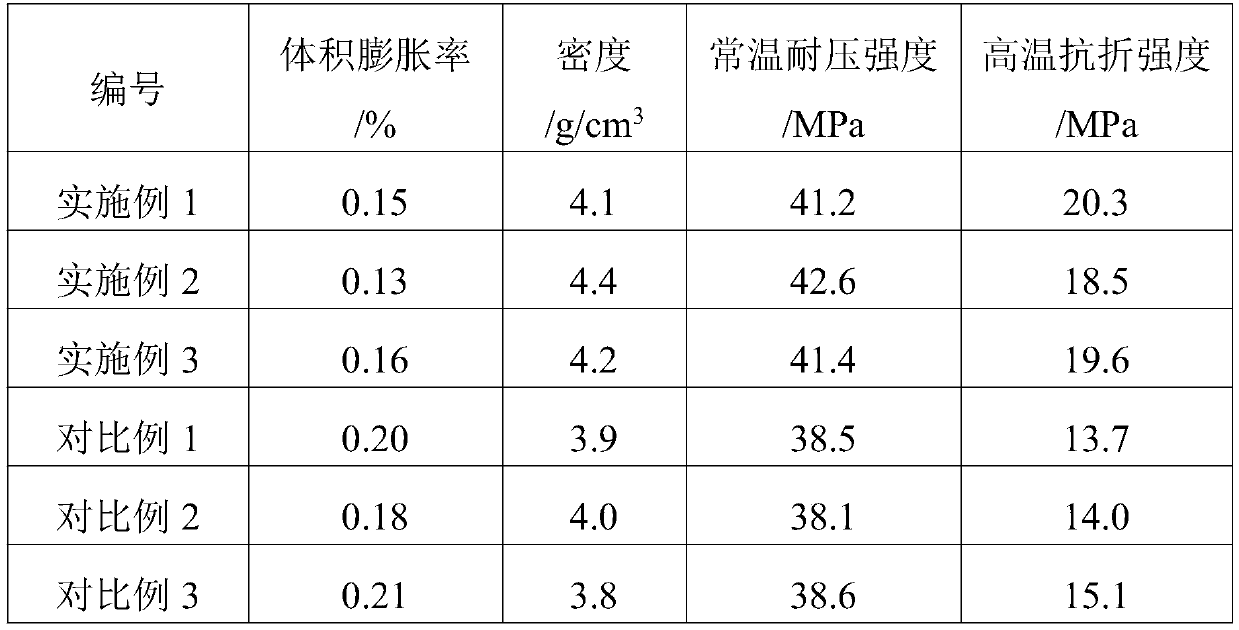Modified phenolic resin, preparation method and refractory material containing modified phenolic resin
A technology of phenolic resin and refractory material, applied in the field of modified phenolic resin and its preparation, and refractory material, can solve the problems of improving heat resistance, improve the bonding strength, and reduce the amount of formaldehyde. Effect
- Summary
- Abstract
- Description
- Claims
- Application Information
AI Technical Summary
Problems solved by technology
Method used
Image
Examples
Embodiment 1
[0028] 1) Add 30g of papermaking waste, 70g of phenol, and 2g of oxalic acid catalyst into the reactor;
[0029] 2) Raise the temperature to 60°C and add 50g of formaldehyde dropwise to the reaction kettle, and keep warm at 90°C for 3h after adding;
[0030] 3) Vacuum dehydration is carried out under reduced pressure of 0.09MPa, the vacuum is released when the temperature is 100°C, and the reaction is stirred for 3 hours;
[0031] 4) Carry out dehydration under reduced pressure again to obtain a modified phenolic resin for refractory materials.
[0032] 5) Prepare a refractory material using the obtained phenolic resin.
[0033] The refractory preparation steps are as follows:
[0034] Mix 40 parts of magnesia-calcium sand and 20 parts of alumina first to obtain a premix, add the premix and 3 parts of papermaking waste modified phenolic resin obtained in Example 1 and mix for 5 minutes, then add 7 parts of carbon Mix the raw material for 30 minutes to obtain the mixed mater...
Embodiment 2
[0036] 1) Add 40g of papermaking waste, 60g of phenol, and 4g of hydrochloric acid catalyst into the reactor;
[0037] 2) Raise the temperature to 70°C and add 50g of formaldehyde dropwise to the reactor, and keep warm at 100°C for 4 hours after adding;
[0038] 3) Vacuum dehydration is carried out under reduced pressure of 0.09MPa, the vacuum is released when the temperature is 110°C, and the reaction is stirred for 2 hours;
[0039] 4) Carry out dehydration under reduced pressure again to obtain the phenolic resin for refractory materials.
[0040] 5) Prepare a refractory material using the obtained phenolic resin.
[0041] The refractory preparation steps are as follows:
[0042] Mix 50 parts of magnesia-calcium sand and 30 parts of alumina first to obtain a premix, add the premix and 6 parts of papermaking waste modified phenolic resin obtained in Example 2 to the mixer and mix for 5 minutes, then add 15 parts of carbon Mix the raw material for 30 minutes to obtain the ...
Embodiment 3
[0044] 1) Add 50g of papermaking waste, 50g of phenol, and 7g of phosphoric acid catalyst into the reactor;
[0045] 2) Raise the temperature to 85°C and add 50g of formaldehyde dropwise to the reactor, and keep warm at 120°C for 2 hours after adding;
[0046] 3) Vacuum dehydration is carried out under reduced pressure of 0.09MPa, the vacuum is released when the temperature is 130°C, and the reaction is stirred for 1 hour;
[0047] 4) Carry out dehydration under reduced pressure again to obtain the phenolic resin for refractory materials.
[0048] 5) Prepare a refractory material using the obtained phenolic resin.
[0049] The refractory preparation steps are as follows:
[0050] Mix 75 parts of magnesia-calcium sand and 50 parts of alumina first to obtain a premix, add the premix and 9 parts of papermaking waste modified phenolic resin obtained in Example 3 and mix for 5 minutes, then add 18 parts of carbon Mix the raw material for 30 minutes to obtain the mixed material, ...
PUM
 Login to View More
Login to View More Abstract
Description
Claims
Application Information
 Login to View More
Login to View More - Generate Ideas
- Intellectual Property
- Life Sciences
- Materials
- Tech Scout
- Unparalleled Data Quality
- Higher Quality Content
- 60% Fewer Hallucinations
Browse by: Latest US Patents, China's latest patents, Technical Efficacy Thesaurus, Application Domain, Technology Topic, Popular Technical Reports.
© 2025 PatSnap. All rights reserved.Legal|Privacy policy|Modern Slavery Act Transparency Statement|Sitemap|About US| Contact US: help@patsnap.com

